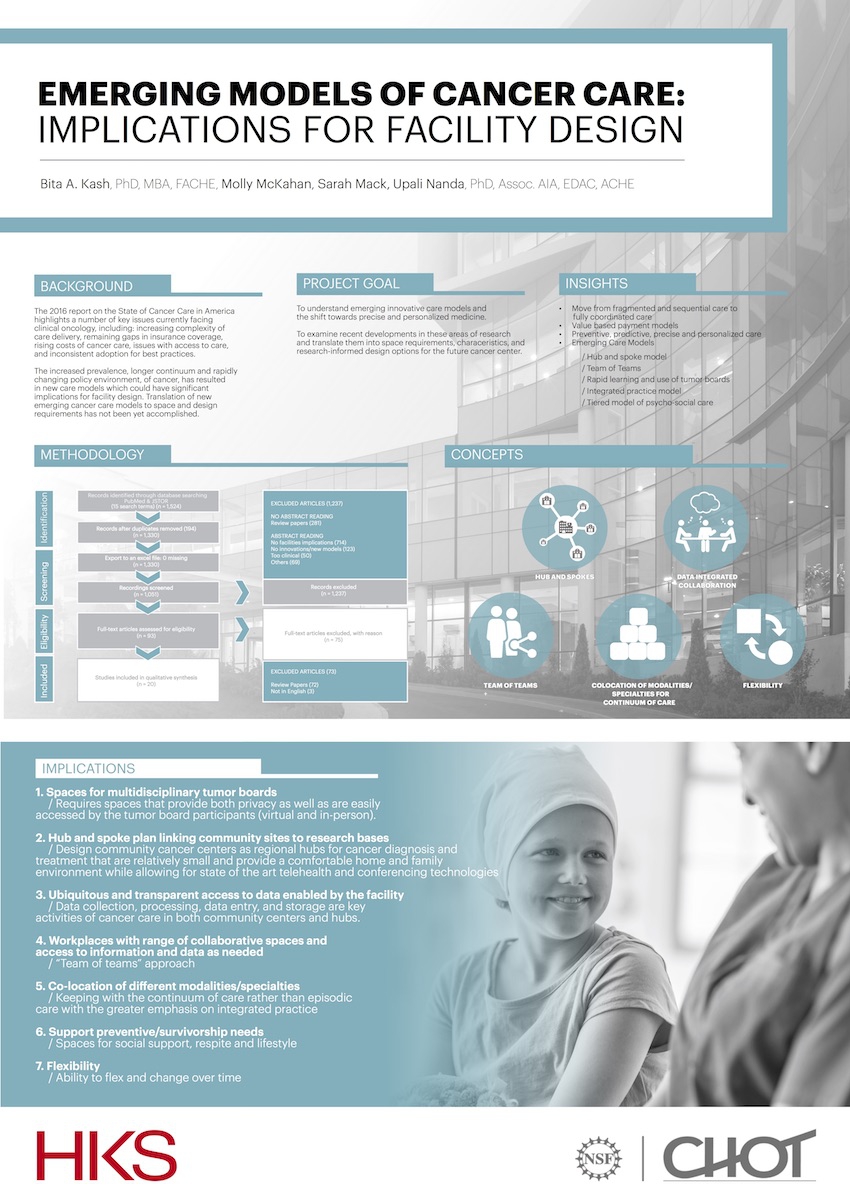Cancer care / Facilities design
European Healthcare Design 2017
Emerging models of cancer care: implications for facility design
By Bita A Kash, Molly McKahan, Sarah Mack, Upali Nanda | 22 Jun 2017 | 0
This project explores society’s future needs for facilities along the continuum of cancer care – specifically, emerging innovative care models and a shift towards personalised medicine. To address the research purpose, a systematic literature review was conducted, focusing on articles related to new cancer care models.
Abstract
The goal is to move from fragmented and sequential care to fully coordinated care. To accomplish this, emerging value-based payment models are first explained because they are designed to improve quality and efficiency of healthcare delivery. Second, we discuss the National Cancer Institute Community Oncology Research Program (NCORP) hub-and-spokes model – a network of investigators, cancer care providers, academic institutions, and other relevant organisations, which facilitates patients’ participation in cancer clinical trials and cancer delivery studies. Third, the ‘four Ps’ of patient-experience models are analysed:
1)Physicians
2)Providers/partners
3)Places where people come into contact with the first two ‘Ps’; and
4)Processes that define the clinical care protocol and patient
journey.
Fourth, emerging models of cancer care are discussed,and we conclude with characteristics we believe make up a
‘dream team’.
Six implications of future facilities design were noted. First, we need to consider spaces for multidisciplinary tumour boards by tumour type through virtual spaces, or allow physicians to meet other physicians to discuss patient care and develop staging and treatment plans. Second, it’s necessary to consider a hub-and-spokes model when we design cancer facilities linked to an academic medical centre. We need to design community cancer centres as regional hubs for cancer diagnosis and treatment that are relatively small and provide a comfortable home and family environment, while allowing for telehealth and conferencing technologies. Third, data collection, processing, data entry, and storage are key activities of cancer care in both community centres and hubs. Fourth, workplaces should be designed for large collaborative spaces with access to information and data as needed. Fifth, different specialties should be co-located; and lastly, flexibility
should be built into facilities to ensure that the growing emphasis on preventive health and ‘survivorship’ can be accommodated.
Organisations involved

